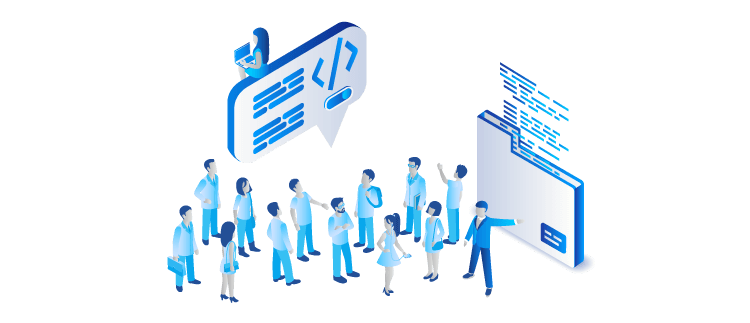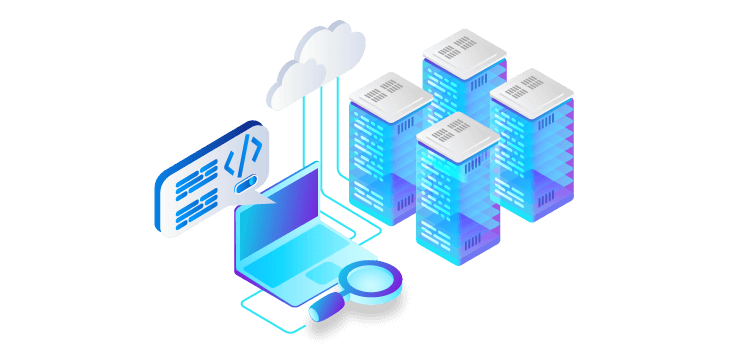This blog post was originally published on 23rd July, 2018 – updated: 28th April, 2020
Within the world of SharePoint, the citizen developer movement has been supported for many years by two primary products: InfoPath and SharePoint Designer. Both products have been extremely popular, helping expand the platform within many organizations by providing power users and IT Pros the ability to create electronic forms (InfoPath) and workflows (SPDesigner). And while SharePoint Server 2019 will continue to support the use of both technologies, Microsoft has ceased investing in them, with mainstream support ending on July 13th, 2021, and extended support ending on July 14th, 2026.

For many organizations that have come to rely on one or both of these tools, the path forward has not exactly been clear, with Microsoft announcing the discontinuation of support for InfoPath Forms Services as far back as January 2014, only to update their strategy later to support the tools in SharePoint 2016, and now again for SharePoint 2019. Similarly, the end of life for SharePoint Designer was announced during Microsoft’s Ignite Conference in 2015, but only more recently has Microsoft Flow been announced as its successor.
Furthermore, Microsoft has identified an issue with the custom Form creation features within SharePoint Designer relating to SharePoint Online, and as of April 25th, 2020, has fully deprecated the feature. It creates an immediate need to discover and update the technology.
None of this should be news to anyone within the space – we’ve all had plenty of time to process this information and, hopefully, begin making plans for the future.
The Road Ahead
Originally released as part of Microsoft Office 2003, InfoPath made it easy for non-developers to design and distribute electronic forms using a WYSIWYG form designer, linking forms to structured data in SharePoint and quickly becoming one of the more popular citizen developer tools on the market. SharePoint Designer was one of the descendants of FrontPage, and grew to become a SharePoint-only tool for customizing team sites and workflows. Both technologies were built for on-premises – but as Microsoft’s strategies shifted toward the cloud, the company made plans to move away from both InfoPath and SPDesigner.
So much of our collaboration activity is moving toward the cloud. Most tools that were designed and thrived in an on-premises world are no longer a fit (for the most part) for the cloud. Even with hybrid SharePoint constituting a large percentage of deployments, many legacy SharePoint sites and solutions have been either archived — or transformed to allow them to take advantage of the latest/greatest offerings from Microsoft and the partner community.

“There are fundamental differences with how SharePoint and other platforms are architected for on-premises versus cloud deployments, forcing SharePoint administrators to review and prioritize what should be archived, what should be updated or rebuilt, and what should simply be left behind. According to Microsoft MVP Marc Anderson (@sympmarc), the most difficult barrier to moving forward is often the people – not the technology. “People are going to continue using what they know, especially until the newer tools reach feature and functional parity. That parity, however, often means doing things in a different way – different ways of thinking – so there has to be a lot of education.”
On that note, Microsoft has increased their messaging and documentation around transformation of both InfoPath and SPDesigner. For example,Transform your InfoPath forms to PowerApps walks the user through step-by-step guidance on getting started, helping to recreate an existing SharePoint app within PowerApps where they can then customize. And for workflow, the article Start a Flow in an App helps the reader create a simple Microsoft Flow to automate one or more tasks in an app, and leverage one of the many connectors that are currently available.
One area where Microsoft has vastly improved their efforts is in providing support documentation. In the past, much of this was left to the community – and while the community continues to add to the rich content available around every Microsoft product, the product teams are quick to supply detailed supporting material, such as Quick Start guides, tutorials, and sample solutions. For example, check out the walkthroughs of PowerApps Variables and Data Sources, or the tutorial on how to Create an app from scratch using Common Data Service for Apps.
The Problem with Migration and Transformation
The number one cause of failure in any migration or transformation effort is the unknown or undetected customization. Whether using a 3rd party migration tool or orchestrating the move using Microsoft’s simple migration tools and scripts, you MUST begin the process with a thorough assessment of your environment, identifying what is there and the priority of each.


The team at Rencore are well aware of this issue and have developed solutions to specifically address the problem.
“In many organizations, hundreds of SharePoint customizations will have been added over time by internal developers, external consultants or even end users. This means that when organizations decide to migrate, they often won’t be aware of the full scale of impact their existing customizations deployed across SharePoint farms have. As a result, they miss important customizations and slow down the whole migration project.”
But identifying customizations is not enough – it may require additional tools, and even a complete rebuild, to move some of them to the latest version of SharePoint, ensuring that they can evolve and be supported going forward. That’s one of the reasons why Rencore has partnered with skybow, a business solutions platform that helps organizations move to the cloud using the Microsoft stack. Specifically, skybow offers Rich Forms as a path away from InfoPath, which aligns with Rencore’s modernization and migration solution.

“Many organizations have their data and their processes locked into customizations created by InfoPath or SharePoint Designer – regardless whether the data is trapped into Form Libraries or complex workflows that fewer and fewer people remember how to read, let alone edit. With those two products being either declared as deprecated, or completely abandoned by Microsoft, the real challenge is to discover, analyze, move and transform the data and the processes into modern SharePoint,” says Microsoft MVP Adis Jugo (@adisjugo), Director of Product Technology at skybow.
Where Rencore is able to automatically discover all customizations in SharePoint, as well as their usage, Rich Forms help move those InfoPath forms into a more supportable format for the future.
Adis continues, “Rencore and skybow are the winning team for everyone who wants to get out of the legacy trap, helping organizations to discover, analyze and transform legacy customizations no matter how they were developed or where they were deployed, and to lay the path forward to a legacy-free modern workplace.
Rencore helps organizations who are seeking to gradually modernize or de-customize their SharePoint environment, or who are in the process of migrating to Office 365. It helps them to discover, analyze, and then transform their existing on-premises customizations so that their environments better align with the new standards that Microsoft has been encouraging developers to follow for customization – such as the SharePoint Framework. And by taking the time to gradually and organically evolve their customizations, they will be better prepared for the new requirements of next-generation SharePoint platforms, such as SharePoint Server 2019, SharePoint Online, and beyond
Iteration is Key
For those of us who grew up in the 1980’s, you probably remember the line from the GI Joe cartoons: “Now you know – and knowing is half the battle.” That line really defines the core of any business transformation: knowing what is there, and then taking action. A solutions like Rencore’s will not only decrease the time and cost associated with migration and transformation, but also reduce the risks inherent to these activities by providing much-needed visibility across your environment. And once you have visibility, you can prioritize each team site and customization, allowing you to move with the least impact to your end users.
According to Microsoft MVP Liam Cleary, the right time to be thinking about moving away from InfoPath and SPDesigner is now, giving you plenty of runway to prioritize the “low hanging fruit” from the really difficult customizations that may require a complete re-architecture.

“InfoPath and SharePoint Designer have been the defacto tooling of choice for all versions of SharePoint. They were easy to use, were part of the Office suite of tools and just worked. Microsoft over the past few years made decisions to no longer update and support these tools, simply due to the way changes were made, these are no longer supported or wanted within the newer platforms. Now is the time to migrate the forms and customizations to the newer model using PowerApps to replace InfoPath, and the SharePoint Framework for the SharePoint Designer customizations. However, this is no small task and requires extensive planning, plus learning new tooling. Choosing this approach will, however, ensure you are following best practice and future proofing the customizations and solutions.”
Start planning cloud governance
Your cloud-first approach needs a cloud-first strategy. Microsoft cloud governance must mirror the modern needs of the business user it seeks to govern. It needs to be dynamic, automatic, and scalable to handle both platform growth and allow collaboration to flow without friction. Rencore Governance is the solution you need to make all of this happen.
Rencore Governance is a unique governance tool catering to businesses and enterprises of all sizes, has simple setup-and-go functionality, addresses a breadth of Microsoft services, and has extensive automation capabilities. Click the button below to learn more about our one-stop Microsoft cloud governance solution.



